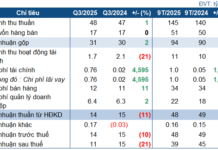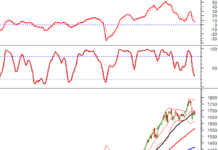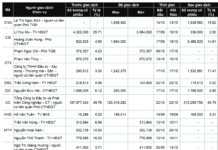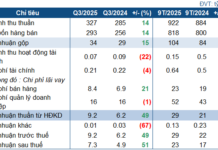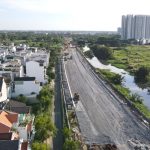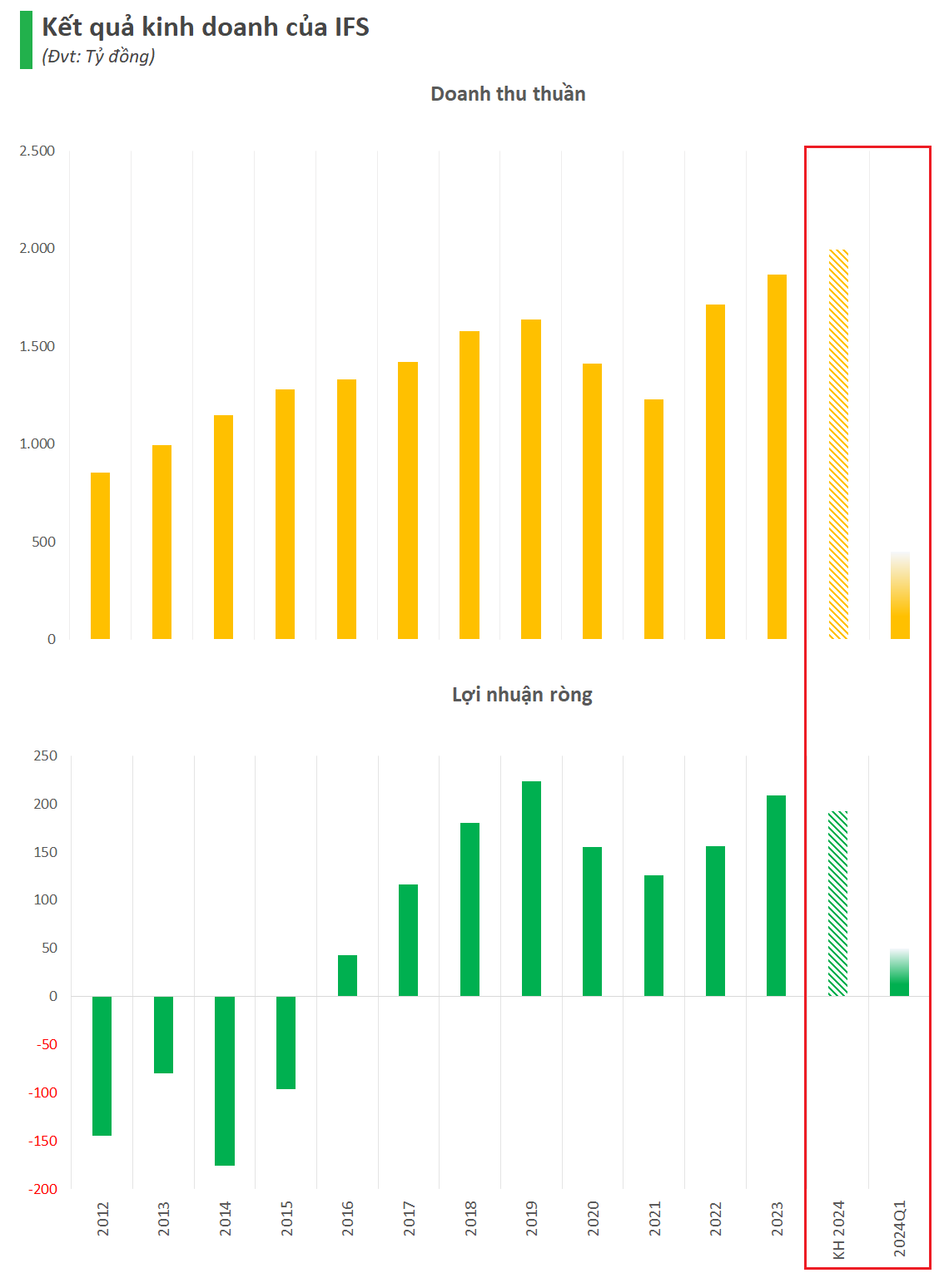These projects fall under the category of 88 important constructions that the Department of Transportation has recently presented to the People’s Committee of Ho Chi Minh City for approval. The plans are to be prioritized and implemented in the 2024-2030 period.
The projects include:
Upgrading and Expanding National Highway 1 (from Kinh Duong Vuong Street to the border with Long An Province): The western gateway, a section of National Highway 1 passing through Binh Chanh District in Ho Chi Minh City, spans nearly 9.6 km and is currently congested due to heavy traffic.
The section from Kinh Duong Vuong Street to the border with Long An Province is only about 20 meters wide, with 4-6 lanes, leading to frequent traffic jams, especially during holidays. Moreover, the absence of a median barrier between cars and motorcycles makes the traffic situation in this area highly complex.
This is one of the five projects aimed at upgrading, expanding, and modernizing existing road infrastructure, as outlined in the approved plans of the People’s Committee of Ho Chi Minh City.
The project will be implemented under a BOT contract, following the special policies outlined in Resolution 98. It involves expanding National Highway 1 to a width of 52-60 meters, accommodating 8 lanes. The total investment is estimated at over VND 12,800 billion, including approximately VND 7,700 billion for land clearance. The Ho Chi Minh City budget will contribute VND 9,700 billion (70%), while the remaining funds will be mobilized by investors.
 The starting point of National Highway 1, where it meets the Vo Van Kiet Boulevard intersection, has a narrow road, forming a bottleneck that causes traffic congestion. Photo: Nguyen Hue |
Investing in the construction of Ho Chi Minh City Ring Road 4, the section crossing the Saigon River – Thay Cai Canal (including a bridge over the Saigon River): As per the master plan, the Ho Chi Minh City Ring Road 4 will stretch over 200 km across five provinces and cities: Ba Ria – Vung Tau (18.7 km), Dong Nai (45.6 km), Binh Duong (47.45 km), Ho Chi Minh City (17.3 km), and Long An (78.3 km).
Phase 1 has an estimated investment of over VND 127,000 billion. The local authorities have agreed on a minimum scale of four lanes, with an emergency stop lane and a median strip between the two directions of traffic… During this phase, land clearance will also be carried out once, in accordance with the eight-lane planning, to facilitate future expansion.
The project for the construction of the Ho Chi Minh City Ring Road 4, spanning 17.3 km across Cu Chi District and including a bridge over the Saigon River, is estimated to cost more than VND 14,000 billion in investment. This includes VND 7,251 billion from the city’s budget and over VND 6,800 billion mobilized by investors. The road will be designed as a complete expressway with four lanes and an emergency stop lane.
Constructing the parallel Phan Van Hon Street: This project, passing through Hoc Mon District, will be 8.5 km long and 30 meters wide, with a total investment of VND 3,720 billion. It will connect National Highway 1 at one end and the Ho Chi Minh City Ring Road 3 at the other.
According to the Department of Transportation, the construction of the parallel Phan Van Hon Street is advantageous due to the predominantly agricultural land along the route, which simplifies land clearance. The new road will help distribute traffic flow from the currently overloaded Phan Van Hon Street. It is also expected to boost socioeconomic development between Ho Chi Minh City and Long An Province.
Investing in the construction of National Highway 50B: The 5.8-km section passing through Binh Chanh District in Ho Chi Minh City is part of the overall project to build the new National Highway 50B, creating a dynamic link between Ho Chi Minh City, Long An, and Tien Giang.
As per the Master Plan for Road Transport Network Development for the period of 2021-2030, with a vision towards 2050, approved by the Prime Minister, National Highway 50B will connect Ho Chi Minh City with Long An and Tien Giang, stretching nearly 55 km (over 35 km in Long An, more than 14 km in Tien Giang, and 5.8 km in Ho Chi Minh City). This new construction project has a total estimated investment of nearly VND 20,000 billion.
In the proposal submitted by the Department of Transportation, the section passing through Binh Chanh District will be 5.8 km long and 40 meters wide, with a total investment of over VND 5,200 billion.
This section will be a part of the overall National Highway 50B, forming a connection with Ho Chi Minh City Ring Road 3 and Ring Road 4. It will also contribute to enhancing connectivity to international gateways via sea (Hiep Phuoc Port, Thi Vai – Cai Mep Deep-water Port, and Long An Port) and air (Long Thanh International Airport).
 The western and northwestern areas of Ho Chi Minh City, bordering Long An Province, are increasingly congested due to infrastructure investments that have not kept pace with development. Photo: Nguyen Hue |
Constructing the East-West Axis (Vo Van Kiet Boulevard) extension from National Highway 1 to Long An Province: Vo Van Kiet Street, stretching from Calmette Bridge (District 1) to the intersection with National Highway 1 (Binh Chanh District), is part of Ho Chi Minh City’s East-West Axis. It is nearly 13 km long and 60 meters wide (accommodating 6-10 lanes). The road was opened to traffic in 2009 and is considered a vital route, connecting Ho Chi Minh City with other localities in the Southern Key Economic Region.
According to the proposal by the Department of Transportation, Vo Van Kiet Street will be extended to the Hai Son – Tan Do Industrial Park in Duc Hoa District, Long An Province, adding 12.2 km to its length, with a cross-section consistent with the current 60-meter width.
In Phase 1, Ho Chi Minh City will clear the land once, in accordance with the 60-meter width planning. It will construct two roads, each 14.5 meters wide, with a 31-meter-wide reserved area in between. The total investment is estimated at over VND 5,200 billion under the Public-Private Partnership (PPP) model, comprising 50% of the city’s budget and 50% of investor-mobilized capital.
Constructing a new road in the northwestern region: This proposed new road will pass through Binh Chanh District, connecting to Long An Province. With a total length of 10 km and a width of 40 meters, the project has an estimated cost of VND 5,200 billion. It will be implemented under the PPP model, with VND 3,900 billion in city budget funds and VND 1,300 billion in investor-balanced capital.
Building Rach Doi Bridge: With a total investment of VND 781 billion, this project will cross Nha Be District, Ho Chi Minh City, and end in Can Giuoc, Long An Province. The bridge section will be 451.9 meters long and 15 meters wide.
Tuấn Kiệt
2023 Remittances Surpass Half of Ho Chi Minh City’s Budget Revenue
As part of the Homeland Spring 2024 program in Ho Chi Minh City, this morning (2/2), the overseas Vietnamese delegation had a tour of the City Hall and met with city leaders.















